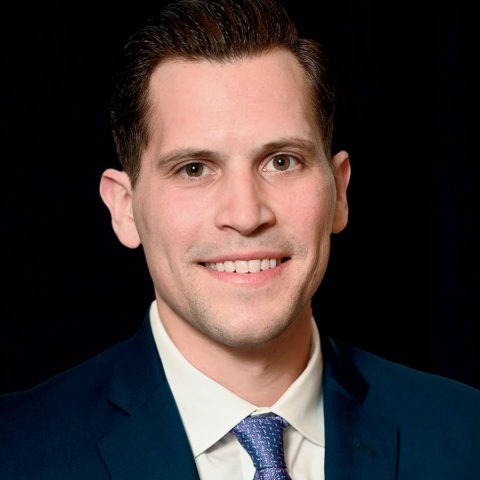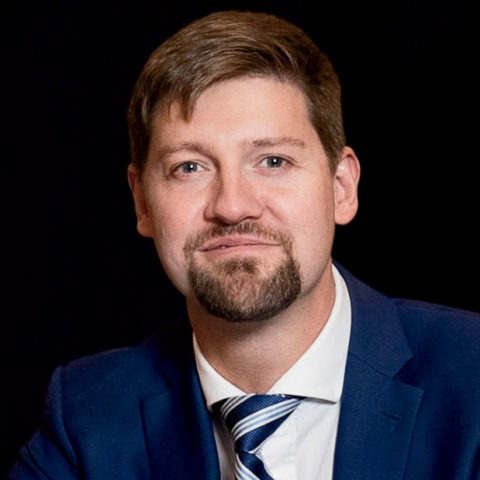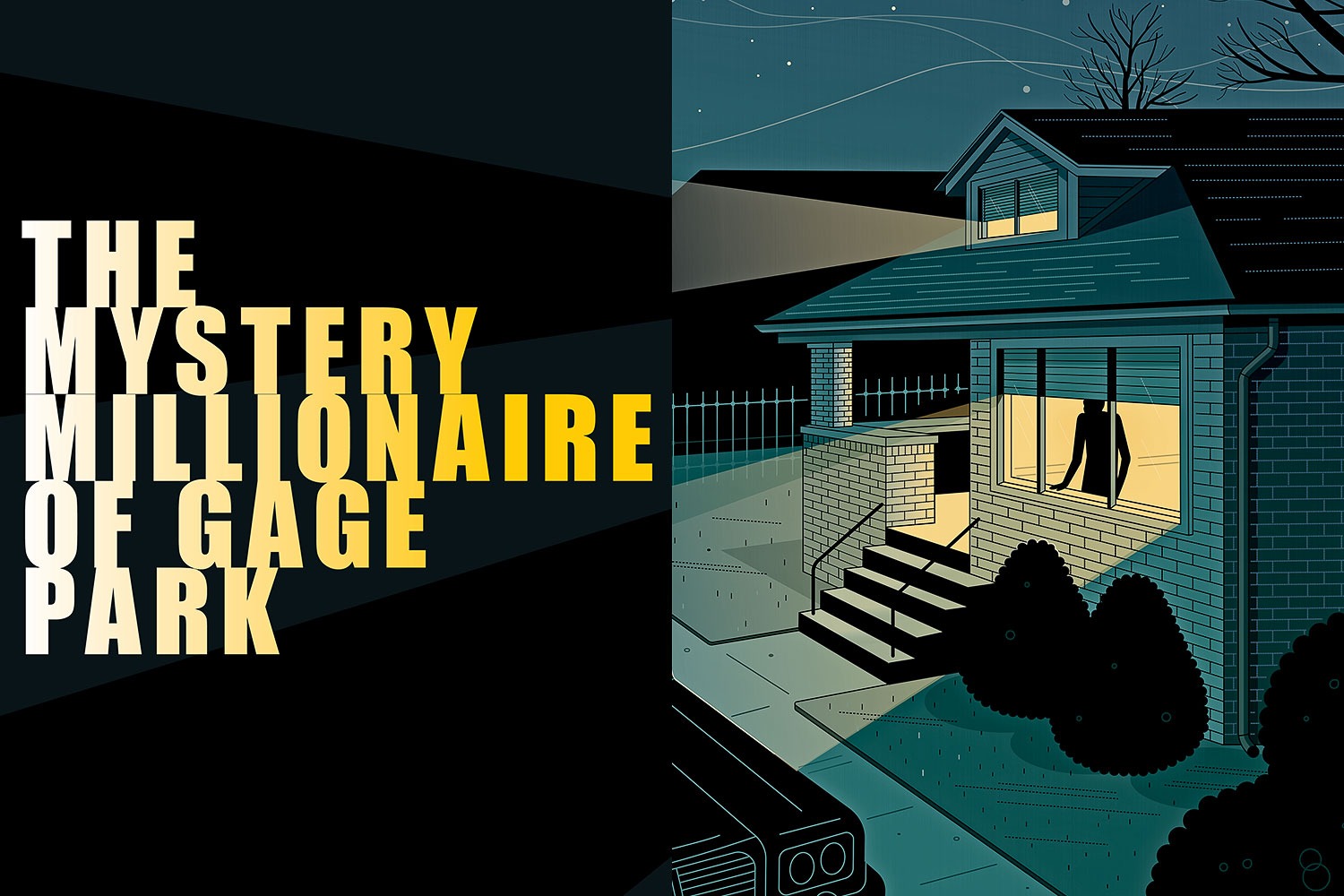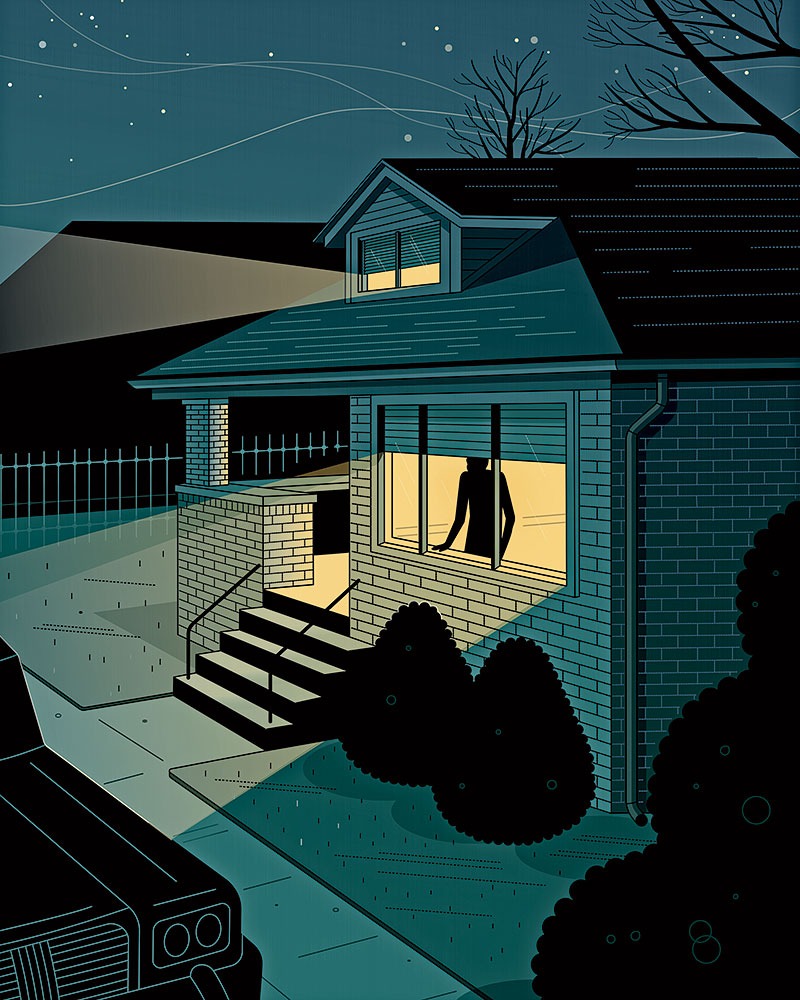The mail began piling up outside a brick bungalow on South Troy Street the week before Christmas in 2016. An 87-year-old man lived inside, alone. Everyone on the block knew Joseph Stancak, the slight figure pushing his two-wheeled shopping cart to Pete’s Fresh Market on Kedzie, walking down the street with his hands clasped behind his back, or cutting his grass with an old Sunbeam electric mower. As one of the last white holdouts on a Gage Park block that was nearly all Latino, Stancak stood out. His new neighbors looked after his well-being, though, shoveling his walk after a heavy snow.
On the morning of Monday, December 19, postal carrier Crystal Hayes noticed that Stancak hadn’t brought in his mail from Friday or Saturday. She asked a firefighter who lived a few doors down to check on him. There was no response to the doorbell, so the firefighter called the police, who also got no answer. The mail continued to pile up, and the firefighter called again. When officers returned on Friday, they noticed a strange odor coming from the house, so they called the fire department to request a forced entry. After firefighters broke a window, Stancak’s next-door neighbor Jesse Guzman climbed through and unlocked the back door. Guzman knew Stancak as well as anyone but had never been inside his home. There was no heat on, even though the temperature was 37 degrees that day, and no electricity.
An hour later, the officers came by Guzman’s garage to report that Stancak was dead. They had found him in the bathtub, wearing a sweater and a jacket.
Stancak had once lived with two older sisters in the 1,600-square-foot house, but Frances died in 2002, and Helen in 2006. He had no wife, no children, no close friends, so no one ever came to call. At the end of Joe Stancak’s life, death was his only visitor. Nobody knows exactly when it came, though, or in what guise. On Stancak’s death certificate, the date is listed as “found December 23, 2016,” and the cause as “hypertensive and arteriosclerotic cardiovascular disease,” but his neighbors wonder whether living without heat helped do him in.
Guzman returned to Stancak’s house a few days later to turn off the water. He walked through his neighbor’s kitchen and living room. He saw an old steel sink with legs and a gas range that belonged on the set of a black-and-white sitcom. The couches were upholstered with floral patterns popular in the 1970s. Packages were lying around unopened. Shingles had fallen off the roof, and the wood underneath was rotting, strips of flashing hanging down. Stancak’s house had not been updated in decades, and neither had the man himself. He dressed in newsboy caps, windbreakers, Dickies pants, and heavy-soled shoes, “like a picture in the ’50s of a blue-collar man,” Guzman says. Sometimes he just wore a Shell gas station jumpsuit. Stancak told Guzman he had worked as an electrician.
The police confiscated three long guns, two handguns, a Red Ryder BB gun, 200 rounds of ammunition, and cash amounting to less than $400 from Stancak’s house — property that would be auctioned off when the Chicago Police Department could not locate any relatives. It would take nearly five years, though, before all his assets could be accounted for and totaled up. And when they were, their value would turn out to be far greater than any of his neighbors could have imagined for a retired electrician who lived so simply.
Joe Stancak was worth $11 million. He had left behind the largest unclaimed estate in American history.

In late November 2022, a few weeks after he was reelected to a third term as state treasurer, Michael Frerichs sat down at his usual table at Uncle Mike’s Place, a Filipino breakfast spot in West Town, to talk about the Stancak case. As the holder of an office whose function is to collect and invest Illinois’s money, the state treasurer does not often make headlines. But after Frerichs announced the news of Stancak’s fortune in October, his name appeared in news stories all over the world, from People magazine to England’s Daily Mail.
At the time of Stancak’s death, though, nobody knew he was sitting on that kind of money, except perhaps Stancak himself. Nobody really knew Stancak at all. As Guzman puts it, “We knew Joe, but we didn’t know Joe.”
By the time reports of his fortune began filtering into the state treasurer’s office, Stancak’s unclaimed ashes had been buried in a pauper’s grave at Mount Olivet Catholic Cemetery, his life forgotten by all but a few Troy Street neighbors. Under Illinois’s Revised Uniform Unclaimed Property Act, banks are required to report inactive accounts to the state treasurer within three years of “the last indication of interest in the property by the apparent owner”; investment houses have five years.

Stancak had $21,000 in two Bank of America checking accounts, but most of his assets were in mutual funds or individual securities. As the treasurer’s office received reports of these accounts, the staff alerted Frerichs that they were dealing with a claim of historic proportions.
Frerichs was thrilled. “I love returning money,” he says. “It’s like I get to play Santa Claus 365 days a year.” But in this case, he had no idea who was supposed to receive Stancak’s fortune. In keeping with his private nature, Stancak had never written a will.
Ordinarily in that situation, the money is distributed to immediate family members. Stancak, however, had none. His last surviving sister died in 2006, and there were no nieces or nephews from any of his six siblings to inherit the money.
Finding Stancak’s heirs would require a deeper genealogical dive than the state treasurer’s office was equipped to undertake. A New York City company called Linking Assets, which specializes in such searches, spotted Stancak’s funds on the treasurer’s website and began conducting its own investigation. The company regularly combs through unclaimed property reports, looking for money to return to heirs, who in most cases have no idea they are entitled to an inheritance, and in many cases have never heard of their long-lost benefactor. In exchange, Linking Assets gets a cut of these funds, though the company won’t say how much.

“If there is no estate, we decide whether we want to take the risk in terms of whether it’s worth researching if there’s children, nieces, nephews, or, in this case, cousins,” explains Linking Assets CEO Peter Quinn. “We started researching on our end. We have genealogists on staff, and they’ve been doing this forever.”
Stancak’s case was complicated, since his parents were Polish immigrants. They were both born in the Szepes region, which at the time was part of the Austro-Hungarian Empire, and after immigrating to the United States, they were married at St. Mary’s Assumption Roman Catholic Church in Passaic, New Jersey, in 1909. Following a move to Chicago, Stancak’s father worked on the railroad. To dig into the family history, Quinn hired Utah genealogist Arden White, who specializes in locating missing heirs.
“Generally when research goes ‘over the pond,’ very few countries kept or keep detailed censuses like we have in the U.S.,” White says. “This makes it necessary to identify the specific place of origin in the old country where the family originated and then either work on the ground yourself or hire local researchers to work on the ground to bring the family forward in time, conduct interviews, then additional research until the entire family has been identified.”
In this case, it was necessary to enlist researchers in Poland to comb through birth and death certificates, baptismal records, and marriage licenses, as well as to contact distant relatives as they were identified to inquire about additional family members. White spent two years searching for Stancak’s heirs, ultimately identifying 119 cousins — once, twice, and three times removed. His research produced a genealogical chart covering a scroll 21 feet, 8 inches long.
“As you talk to more heirs, you find out, oh, there was another branch,” Quinn says. “So you make sure you’ve done your due diligence to make sure you capture everyone. You know, someone knew about another cousin who lived over here.” Of the 119 heirs, 76 live in Poland, Slovakia, or the Czech Republic. Only 16 are in the United States — seven in the Chicago area.
Had Linking Assets not spotted the unclaimed property notice and tracked down Stancak’s heirs, his money might have remained with the treasurer’s office in perpetuity, awaiting a claimant. “The state would not have gone to the expense of hiring a genealogist in Poland,” says Allen Mayer, Frerichs’s chief of staff.
So just how does a never-married electrician from the Bungalow Belt with only a junior college education amass an $11 million fortune? No one knows for sure, but plenty of people involved in his case have theories. The easiest answer is that he didn’t spend much — he had no dependents, lived in an old house where for many years he shared expenses with his sisters, wore old clothes, drove an old car.
“What are three words that profile the affluent? FRUGAL FRUGAL FRUGAL,” wrote Thomas J. Stanley and William D. Danko in their 1996 bestseller The Millionaire Next Door: The Surprising Secrets of America’s Wealthy. “Being frugal is the cornerstone of wealth-building.”

Joe Stancak was frugal, almost to the point of miserliness. Although he allowed himself a few luxuries — a 38-foot pleasure boat named Easy (it was an old boat, launched in 1973) and frequent vacations in Hawaii — he was, in his day-to-day life, as penny-pinching as any pensioner on a fixed income. “He was a big saver,” says Mayer.
Stancak drove a 1985 Oldsmobile Ninety-Eight. That was a luxury sedan when he bought it, but in its latter days, the neighbors always knew when he was coming home, because they heard his car clanking down the alley and saw smoke seeping from the diesel engine. Joe Malec, another old white holdout on Troy Street, describes Stancak’s spending habits more bluntly: “He was cheap.”
Malec once drove with Stancak to renew his driver’s license at the secretary of state facility in Bridgeview. The Oldsmobile broke down in the parking lot. At first, Stancak refused to pay $10 for a jump from the gas station across the street.
“I’m not sittin’ here in a broken-down car!” Malec shouted at him. Stancak finally relented.
But Stancak’s frugality alone doesn’t account for the fortune he accumulated. He also invested, which can turn a little money into a lot over the course of a lifetime. For example: Had he put even $100 a month into a S&P 500 index fund starting in 1959, when he was 30, until the age of 65, that investment alone would be worth more than $3.8 million today.
At the time of Stancak’s death, nobody knew he was sitting on that kind of money, except perhaps Stancak himself. Nobody really knew Stancak at all. As his neighbor Jesse Guzman puts it, “We knew Joe, but we didn’t know Joe.”
Stancak lived his entire life in Gage Park. He spent his childhood on South Artesian Avenue. In the 1940s, he attended Gage Park High School and then Chicago Vocational School, where he was a member of the National Honor Society and managed the wrestling team. After high school, he earned a radio operator’s license at Woodrow Wilson Junior College in Englewood (now Kennedy-King College). Radios became a lifelong interest for Stancak, who repaired them in his basement workshop.
Some of his brothers and sisters moved to the suburbs, but he refused to join the white flight that transformed the neighborhood from Polish and Irish to Latino. Why move when the house was paid for? He was especially proud of his yard, hunching over to pull weeds, picking raspberries from his bush to freeze for the winter, yelling “Not my grass!” at neighbor boys when their soccer ball skipped across his yard. One of them, Adan Lara, now an adult, thought of Stancak as “the grumpy old white guy.”
“He wasn’t a social man,” Guzman says of his next-door neighbor. “He would sit outside in the backyard in his lawn chair when the house was hot. I never saw any air conditioners in the window.”
Despite Stancak’s solitary nature, Guzman got a few words out of him from time to time. Stancak would stop by Jesse’s garage and talk, Guzman recalls, “about modern times and how the neighborhood was changing. Nothing personal. He wasn’t very verbal.” Other times it would be Guzman popping into Stancak’s garage to help the old man start the Oldsmobile. They had only one source of conflict: Stancak was a vegetarian whose idea of supper was spooning peas and corn out of cans, so he’d scold Guzman for grilling meat in his backyard.
“No, that’s no good,” he’d say. “You got to eat vegetables.”
“OK, Joe,” Guzman would respond, humoring another of his neighbor’s eccentricities.
In the last year of Stancak’s life, the Oldsmobile stayed in the garage. It was too decrepit to be driven, and Stancak was too tired to fix it. He became so frail that Guzman helped him mow his lawn. “He was an independent man,” Guzman recalls. “He never asked anybody for any help. He never disclosed he had no problems. If we had known he didn’t have any heat, we would have helped him.”
But it wasn’t in Stancak’s nature to be forthcoming — about the heat or his money. Vytenis Lietuvninkas, a West Lawn attorney who did some legal work for Stancak’s family in the 1990s, speculates that, as the last survivor of seven childless siblings, Stancak may have built his fortune through inheritance. Lietuvninkas helped Stancak administer the estate of his sister Ann McCormick. “My assumption is they all inherited from one another. Being the last one standing, he got everything,” Lietuvninkas says. “Those people who never married, don’t have kids, typically do very good.”
According to the state treasurer’s office, $8.1 million of Stancak’s $11 million was in securities, including one mutual fund account worth $3.8 million. The rest was mostly in uncashed dividends and savings. (There were also much smaller assets, including a $15 bank refund and a $49.94 rebate from a mail-order company.) In all, the state received reports from eight different financial institutions, but it’s not allowed to disclose where Stancak invested his money, or in what stocks. Even in death, Joe Stancak remains a mystery.

Anna Madeja has never been rich, never had more than just enough for her and her husband to buy a bungalow in Garfield Ridge for $255,000 in 2004. Madeja was born in Zakopane, a small town in southern Poland not far from the region from which Stancak’s parents had emigrated. She came to Chicago in 1994, when she was 28. Like many Polish immigrants, she found work cleaning houses. After several years of returning periodically to Poland, Anna moved to Chicago for good in 2003, eventually bringing over her mother, Helena, a seamstress, in 2021. Anna’s brothers, Tadeusz and Franciszek Soltys, also moved here, Tadeusz to work as a butcher, Franciszek in construction.
The siblings all settled in or around Garfield Ridge, a historically Polish neighborhood on the Southwest Side. Anna and Franciszek live in bungalows on the same block of Narragansett Avenue; Tadeusz lives nearby, in an apartment in Clearing. They have built lives in this country by doing blue-collar jobs that don’t require command of the English language. They live less than five miles due west of Stancak’s house but had no idea he existed — not until they received letters informing them they were entitled to a share of his fortune.
Stancak, as it turns out, was their first cousin once removed. Their father, Ludwik Soltys, was the son of Anna Kapolka, a sister of Stancak’s mother, Veronica.
When I ring the doorbell of Anna Madeja’s bungalow, her 30-year-old daughter, Maggie, answers and steps outside to translate questions and responses. Maggie, who grew up in Garfield Ridge and graduated from John F. Kennedy High School, also read and answered the letters from Linking Assets.
Anna Madeja and her brothers live less than five miles due west of Stancak’s house but had no idea he existed — not until they received letters informing them they were entitled to a share of his fortune.
Had Anna ever heard of Joe Stancak before this? “Nie!” she exclaims, shaking her head vigorously, a gesture that transcends language barriers. Anna’s mother, who was still living in Poland when Linking Assets began its work, was the first to hear from one of the firm’s researchers. “He was reaching out, and he was asking who else was related,” Maggie explains. Anna’s mother told him about her children in the United States.
The siblings “haven’t really discussed the money situation,” Maggie says, because they don’t yet know how much they’ll be getting, or when they’ll be getting it, but if it’s enough, Anna would like to pay off her mortgage and buy a car. “She says, ‘I would be happy with $500,’ because she knows there’s a lot of people,” Maggie says, translating.
Anna, Tadeusz, and Franciszek will be getting much more than that. Stancak’s $11 million fortune will amount to around $7.65 million after estate taxes are deducted. But his estate may have to settle first with the Internal Revenue Service, since he does not appear to have filed a tax return the last three years of his life. And there will be money deducted for accounting, legal, and genealogical research fees.

What’s left will not be divided equally among Stancak’s 119 cousins, according to Kenneth Piercey, a Barrington probate attorney retained by Linking Assets to represent the interests of the heirs. Inheritance law is governed per stirpes (Latin for “by familial stocks”), which assigns payouts according to the number of descendants in each heir’s line. Since the Soltys siblings are among seven living grandchildren of one of Stancak’s aunts, their share is less than 1 percent each. Each will get a check in the low- to mid-five figures: not necessarily enough to pay off a mortgage, but definitely enough to buy a car. One heir who has a bloodline to himself will get close to 5 percent of the inheritance, which could amount to more than $300,000.
Under the laws regarding intestate inheritance, blood counts for everything. Distant cousins in foreign lands who have never heard of Joe Stancak will get life-changing money, while the Troy Street neighbors who looked after him in his dotage will get nothing. Stancak could have changed that by drawing up a will, but he may not have wanted to spend the money on an estate attorney. “That would be consistent with the quote-unquote cheap mentality,” says Piercey.
Piercey has devoted more than 200 hours to the Stancak case, the most time-consuming of his 12-year career. Part of his job was contacting heirs, who were understandably skeptical about a stranger’s promise of free money. “Sometimes it’s like, ‘Is this legitimate?’ ” Piercey says. “ ‘How long is it gonna take?’ is probably the most common question I get.” But all’s well that ends well: “When they get their check, that’s when the skepticism ends.”
Early last year, after Linking Assets was satisfied it had identified all Stancak’s living first cousins, the company asked Richard Rehak, an heir who lives in Big Falls, Minnesota, to file a petition with the Probate Division of the Circuit Court of Cook County, asking to have Piercey named the administrator of the estate. (The request had to be made by a U.S. resident.) Rehak, a retired truck driver, was born on Chicago’s South Side but moved to Minnesota when he was 12. His mother was a Stancak, a daughter of Joe’s uncle Valentin, making him a first cousin once removed. “I better get a couple bucks before I kick the bucket,” says Rehak, who will turn 80 in May. Rehak remembers a few older family members, but not his long-lost cousin, who was 14 years his senior.
No one was more astonished than Jesse Guzman, who found out about his neighbor’s wealth from an online article. “I was speechless,” he recalls. “I had no words. He could have been living in Hawaii.”
Last May, Piercey filed an affidavit of heirship, supported by 1,000 pages of genealogical material from White, outlining each heir’s relationship to Stancak. Once it was accepted, Piercey filed a claim with the treasurer’s office.
When Piercey took over the case, not even he was aware of how much money was involved. That did not become evident until last July, once all the keepers of his financial holdings had reported them. In October, once the state had collected and liquidated all Stancak’s assets, the treasurer’s office FedExed a check for $11,099,979.62 to Piercey & Associates. (One of Piercey’s assistants deposited the check at a local bank. The teller did not seem impressed — it’s Barrington, after all.)
At that point, Frerichs issued a press release announcing his office had “returned $11 million to the estate of a Chicago man who died of natural causes just before Christmas in 2016.” The National Association of Unclaimed Property Administrators soon determined that it was the largest return of unclaimed property in the nation’s history. The story became international news. TV crews set up outside Stancak’s bungalow, now owned by a Latino family who bought it for $250,000 in 2019.
No one was more astonished than Jesse Guzman, who found out about his neighbor’s wealth from an online article. “I’m looking at it, I’m looking at the house. ‘That’s Joe,’ ” he recalls thinking. “I was speechless. I had no words. He could have been living in Hawaii.”
That would not have been Joe, though. “He was from the older generation,” Guzman concludes of Stancak, who was born mere weeks before the stock market crash that began the Great Depression. “That’s how the older generation thought. At some point, though, you gotta say, ‘I can live it up a little, fix my house.’ ”
Stancak’s heirs likely won’t see any of his money until this summer, at the earliest. Piercey still has to settle the estate’s tax obligations, then send letters to every heir, detailing how much money each will be receiving. The settlement must be approved by all heirs before any can get paid. Since many of the documents will need to be translated into Polish or other languages and mailed overseas, this case will drag out longer than most. So Anna Madeja isn’t getting excited quite yet. But once she cashes her check, she’ll have one word for the cousin she never met: dziekuje. In Polish, that means “thank you.”




